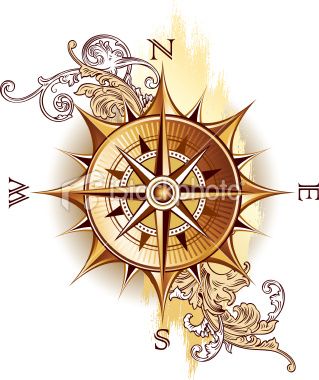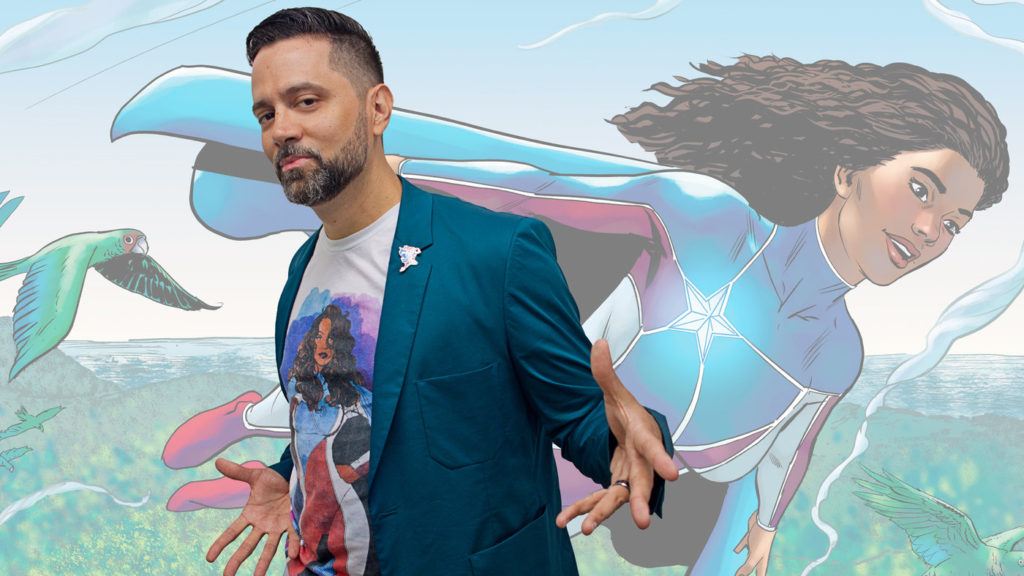
Puerto Rico has been the backdrop of many classic and modern literary works. In most of the stories, the island is as important as the main character, and other times, it is the birthplace and inspiration of the author. In my case, the island holds memories of a family caught between two cultures. Of a daughter who grew up speaking both Spanish and English and experiencing the unique trials and joys of being young in the Hispanic Caribbean. These experiences became the inspiration for my young adult fantasy trilogy, The Halls of Abaddon, a spiritual thriller where supernatural evil flows beneath the surface of everyday life.
Whether you like novels, musicals, or memoirs, you can get to know the heart and soul of the Caribbean through the eyes and words of people who have lived on and loved the island.
To help inspire your future travels, here’s a selection of eight must-have experiences for literature lovers in Puerto Rico. If you would rather have the ebook version to take with you on the road, scroll down and sign up to receive your FREE eBook, full of gorgeous photos and unique literary itineraries. Accompanying book selections range from classic to contemporary and offer a window into the unique Puerto Rican experiences of their time.
Literary Tourism Experience #1: René Marqués’ Arecibo
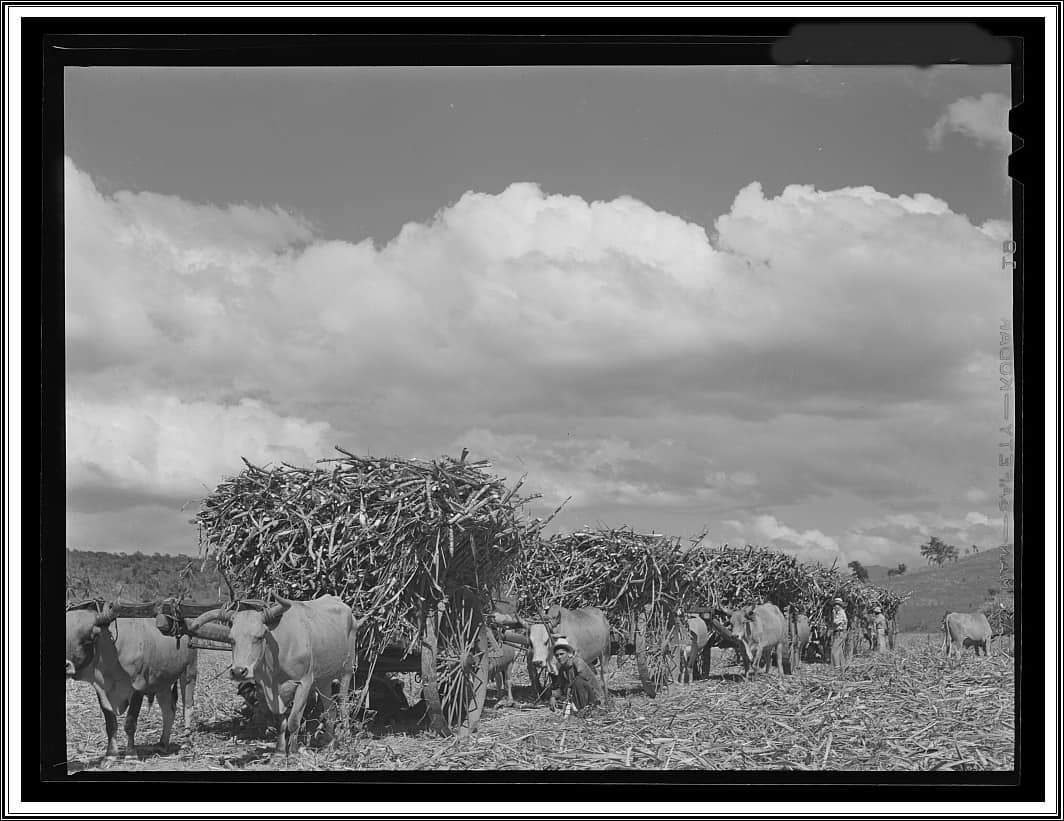
Touring the Arecibo countryside is one of the best ways to understand the iconic literary work of one of Puerto Rico’s most famous writers, René Marqués. This author and playwright is best known for his detailed descriptions of Puerto Rican country life. Every high schooler on the island is assigned to read his classic play, La Carreta (The Oxcart). Most will complain about it, like my daughter did (it can be a bit long on description for contemporary teens) but there are few other books which explore so completely the connection between the Puerto Rican people and their land.
Marqués was born and raised in Arecibo on the north coast of the island. One of the best ways to identify with this author’s work is to cruise the Arecibo countryside on PR-681. This is not a part of the island that many tourists visit, but I can guarantee you, it’s worth the side trip from San Juan. The views along the coastal highway are breath taking, and much of the countryside Marqués writes about in La Carreta is still as it was when he penned the play in 1953.
How to Get To Arecibo
From San Juan, take PR-18 west to Bayamón/Arecibo. From there you will merge onto the Expreso José de Diego/PR-22 W. In Bayamón, you’ll connect to PR-681, which follows the north coast.
Driving on the small roads of Puerto Rico can be harrowing at first, but before you know it, you’ll be driving like a local (parking on the opposite side of the road, cruising through stop signs–you know, all the crazy things that make living on the island so much fun!
On Sundays, locals cruise up and down PR-681, stopping at the little chinchorro (snack) stands and sit-down restaurants along the way. The views of the Atlantic on the north side of the road are amazing and you’ll have a great time talking to the locals and learning about life in rural Puerto Rico. Plan to make a stop at Arrecife 681 (PR-681 km. 5.9), a popular restaurant with both locals and tourists. A must-have drink at Arrecife 681 is the parcha (passionfruit) mojito. The beach view, the ocean breeze, and this relaxing, rum-based drink are all part of the PR-681 experience. Once you drive it, you will relate to the beautiful descriptions of rural Puerto Rico in René Marqués’ best-known literary work: La Carreta.
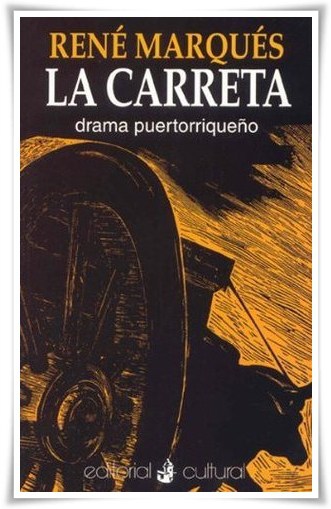
Based on a true story, La Carreta explores what happens to a Puerto Rican family that moves from the countryside to San Juan, and later to New York City because of economic and agricultural hardships that drove them into poverty on the island. Themes from the play such as closeness to the land are visible in many of the playwright’s works.
Here’s my all-time favorite quote from La Carreta (translated from Spanish)
“I was walking with my father when he stopped on a curve and after a small moment of silence, he asked me, ‘Do you hear anything other than the bird’s song?’ I sharpened my ears and a few seconds later I responded, ‘Yes, it is the sound of an oxcart.’ ‘That’s it,’ my father said. ‘It’s an empty cart.’ Then I asked my father, ‘How do you know it’s an empty cart if we haven’t seen it yet?’ And my father replied, ‘It’s easy to know when a cart is empty because of the noise. The emptier it is, the more noise it makes.’
Until this day when I see a person talking too much, interrupting conversations, being inopportune, violent, too proud of what he has or belittling people, I hear my father’s voice saying, ‘The more empty the cart is, the more noise it makes.’”
Literary Tourism Experience #2: Esmeralda Santiago’s Hometown
“We came to Macún when I was four, to a rectangle of rippled metal sheets on stilts hovering in the middle of a circle of red dirt.” ― Esmeralda Santiago, When I Was Puerto Rican
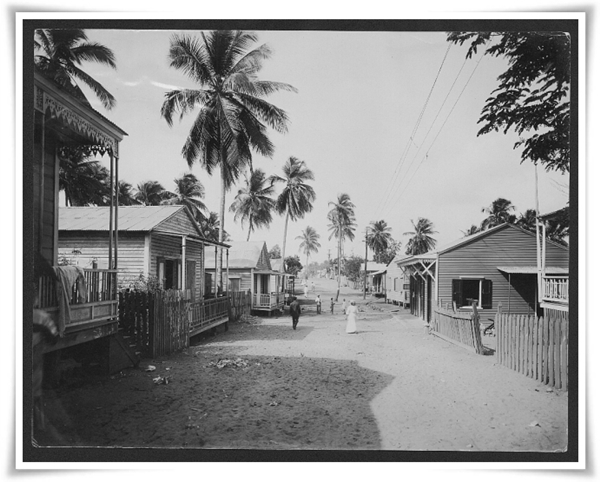
The celebrated Puerto Rican author, Esmeralda Santiago, grew up in rural Puerto Rico, in an impoverished neighborhood on the outskirts of San Juan. Her most well-known work, When I Was Puerto Rican, starts in the small town of Macún in the early 1950s. The author’s lyrical prose portrays the tropical sounds, sights, and the poverty she knew growing up. Santiago contrasts the peaceful landscapes of Puerto Rico with the turbulent family dynamic of her early years and takes the reader on her journey from the barrio to Brooklyn to Harvard.
One of the best ways to understand the author is to explore the neighborhood where she grew up. Macún is part of the Toa Baja municipality, a northeastern coastal town that offers stunning views of its neighbor, Old San Juan. Its beaches and historic sites also make it a fun place to explore for those who want a convenient side-trip close to the capital city.
How to Get to Toa Baja
From San Juan, take PR-18 west to Bayamón/Arecibo. From there you will merge onto the Expreso José de Diego/PR-22 W. You can combine this trip with the Arecibo itinerary and do both towns in one day.
If you’re looking for a nice spot to spend a day outside the city, you can enjoy pavilions and picnic areas at the beautiful public beach, El Balneario Punta Salinas. The waters are calm and there is a designated area for kayaking and boating, safely separated from the swimming area. While the metropolitan area doesn’t boast the pristine coastline of some other corners of the island (like Arecibo), this is a nice compromise between staying close to the city but still getting some fun in the sand and surf. And you will be bathing in literary history as you imagine the young Esmeralda, swimming in these same waters.
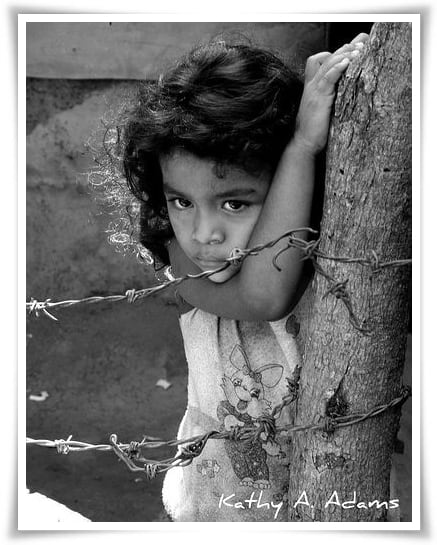
Young Esmeralda Santiago
When I Was Puerto Rican is a fascinating memoir. In beautiful, lyrical prose, it touches on subjects like self-discovery, immigration, and the Puerto Rican identity. It’s a great beach read for your day in Toa Baja.
Literary Tourism Experience #3: Hunter S. Thompson’s Favorite Coffee Shop
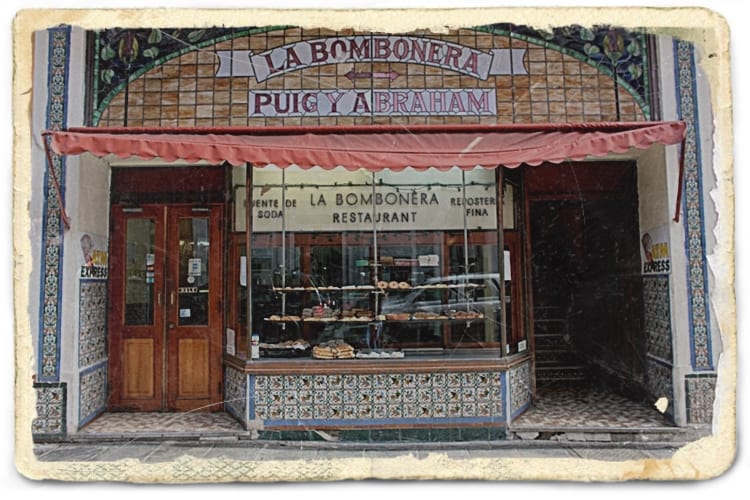
In 1959, a brash twenty-two-year-old reporter named Hunter S. Thompson put Puerto Rico on the literary map. Many will recognize Thompson as the “Gonzo” journalist and author of The Rum Diary, or as he called it, “The Great Puerto Rican Novel.” The novel mirrors Thompson’s experiences working as a journalist in 1950s San Juan through the turbulent, alcohol-imbued escapades of its narrator, Paul Kemp. For a more detailed look at Hunter S. Thompson’s Puerto Rico, click here.
Hunter S. Thompson began his day at La Bombonera café in Old San Juan (259 Calle San Francisco). Thompson’s usual breakfast was toast, fresh pineapple, and four cups of strong Puerto Rican coffee. This iconic bakery, founded in 1902, still serves the best café con leche in town. But unless you have a high tolerance for caffeine, DO NOT drink four cups of Puerto Rican coffee. You’ll be bouncing down the cobblestone streets of Old San Juan!
A must-try classic of La Bombonera is the mallorca, a warm pastry filled with ham and cheese and sprinkled with powdered sugar. One is never enough!
Literary Tourism Experience #4: Hunter S. Thompson’s Favorite Restaurant
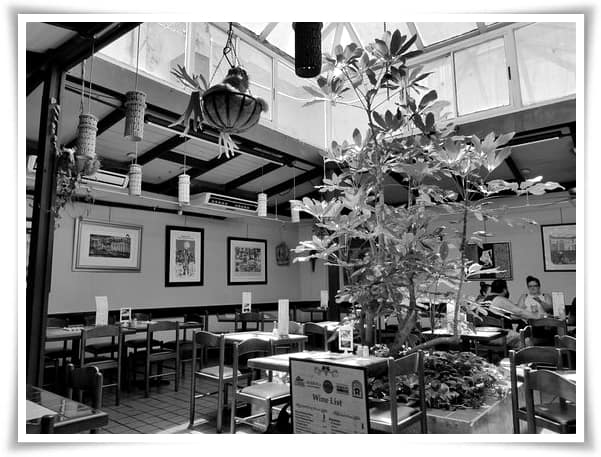
While Hunter S. Thompson lived and wrote in Puerto Rico, he did his share of boozing. “The drinking would begin at noon,” he wrote. “It made the day go a little faster.” His drink of choice was rum on the rocks — a modest luxury at a time when a bottle of rum cost a dollar, and a bag of ice, two.
You’ll pay a bit more for your glass of rum at El Patio de Sam (102 Calle San Sebastián, Old San Juan), a local restaurant/bar that will forever be associated with Thompson’s rum-swilling days. The bar’s banana-yellow walls and lazy ceiling fans inspired Al’s Backyard, the Rum Diary hangout that provided a counterweight to the “high-price ‘New York’ bars that were springing up all over the city like a rash of neon toadstools.”
A must-try island rum is Ron del Barillito. This “cognac of the Caribbean” is a blend of rums aged 6-10 years in charred oak barrels. Don Q, which many locals claim is the best rum in Puerto Rico, should be on your literature lover’s beverage bucket list. This classic rum is named for Miguel de Cervantes’ iconic character, Don Quijote.
Literary Tourism Experience #5: Hunter S. Thompson’s Favorite Beach
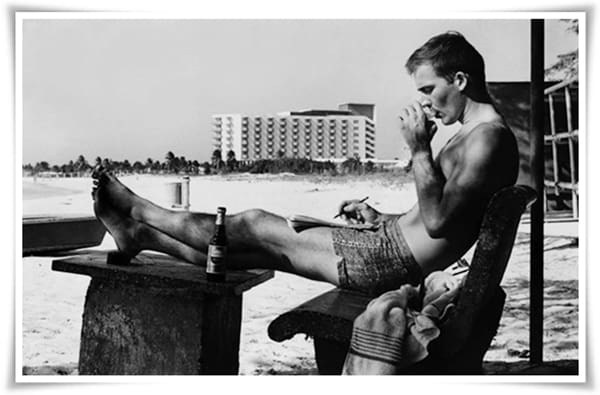
While El Patio de Sam is part of literary history, to really get a feel for Thompson’s Puerto Rico, you must visit his favorite beach, La Playa Río Grande. This beautiful beach is in Loíza Aldea, 15 miles east of San Juan. Getting to Loíza Aldea is an easy ride down the curvy, two-lane highway, Carretera 187. But in Thompson’s day, the village was only accessible by a rough sand road — “like something hacked out of a Philippine jungle.”
There are few tourists in Loíza Aldea. Instead, there are roadside chinchorro stands selling fried snacks and refreshing coco frío (cold coconut served with a straw). In The Rum Diary, a character named Yeamon lived in Loíza Aldea, where he fished for lobster with a speargun and played coconut football in the surf. The real-life Thompson lived here as well, on a secluded beach in a two-room shack with his common-law wife. He spent nights swimming naked and drinking cheap rum — “feeling for the first time,” Thompson wrote, “… that I had actually come to the Caribbean.”
Must-try snacks at the local chinchorros are alcapurrias (fritters made of green bananas and taro root stuffed with meat) and surullitos (fried corn sticks with a mayo-ketchup dipping sauce).
Literary Tourism Experience #6: Lin-Manuel Miranda’s Ancestral Town
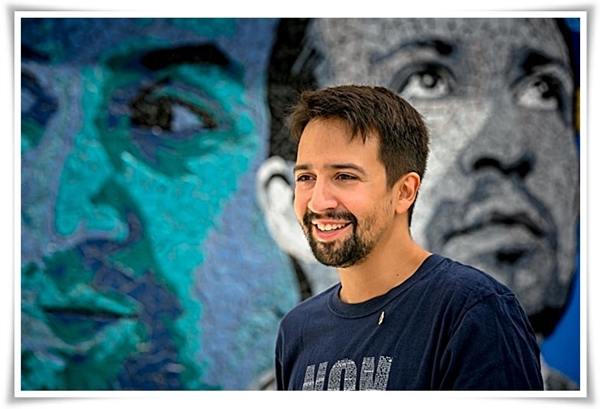
For another famous American writer, the Caribbean was — and still is — home. Lin-Manuel Miranda, the Tony Award and Pulitzer Prize winning author of the Broadway smash hit “Hamilton” is intricately connected to the sounds and stories of the island. Lin-Manuel is a New Yorker, born and bred, but Puerto Rico pulses in his blood. It’s the homeland where both of his parents grew up and where he spent every summer as a child. You can walk the same streets and experience the charming small-town vibe that inspired Lin-Manuel’s Tony-Award winning musical In the Heights.
Vega Alta is where Lin-Manuel spent summers as a child. It is the hometown of his family and the best place to soak up the spirit of this rhythmic writer and composer. In the center of Vega Alta is La Placita de Güisin, a vibrant public space built by Luis Miranda, Lin-Manuel’s father. Luis left for New York when he was 18, but never stopped coming back. The small plaza is built in memory of his late father — community leader Güisin Miranda. It features a bakery, a colmado, and a café. The placita is a great place to mingle with locals, enjoy a cold drink, a cup of coffee, traditional food, and — on weekends — dance to live music.
A must-have experience at La Placita de Güisin, is sitting in the plaza at Christmas time, where you will likely hear local jíbaro, or folk music, featuring the guiro — a notched hollowed-out gourd — and the cuatro, a guitar-like instrument with ten strings lovingly considered as the national instrument of Puerto Rico.
While listening to music or dancing in la placita, take a moment to visit the small gallery erected there. You’ll learn more about Lin-Manuel’s career, and enjoy some personal memorabilia — including one of his Tony Awards. Be sure to snap a picture in front of the colorful mosaic mural that pays homage to the generations of Mirandas and their love for Puerto Rico, from grandfather Güisin to Lin-Manuel depicted in his iconic role as Hamilton. And don’t forget to check out Lin-Manuel’s official merchandise store. All the proceeds at the Tee-Rico store benefit creative artists in Puerto Rico.
Literary Tourism Experience #7: Chocobar Cortés
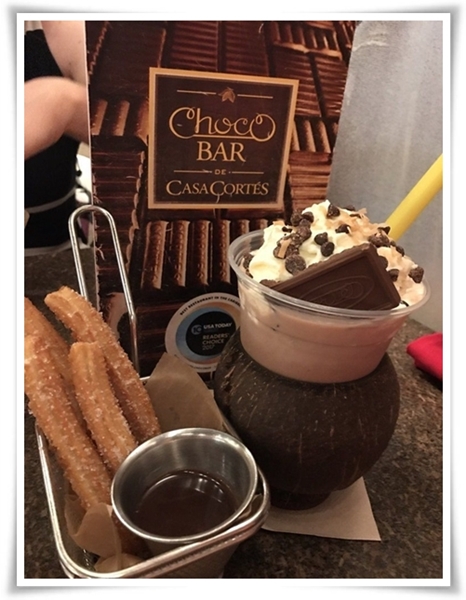
It is unlikely that authors like Rene Marques and Esmeralda Santiago would have enjoyed the decadent opportunities available to writers in the city today. But they would probably encourage you to indulge in what has to be the ultimate literary experience — writing in a café where every item on the menu is made with gourmet chocolate.
At Chocobar Cortés (210 Calle San Francisco, Old San Juan), grab a window seat, take out your journal and discover the best place to write in all of San Juan.
Chocobar Cortés is a family-owned company that has been making chocolate since 1929. From inspiration to presentation, Chocolatier Patissier Ricardo de Obaldía, is a flavor alchemist. Known for his imaginative and elaborate chocolate creations, Ricardo designs a unique culinary experience that celebrates the Chocolate Cortés tradition. His creativity and the Cortés family’s passion for chocolate has helped make Chocobar Cortés one of the top three rated restaurant cafés in San Juan as well as one of the must visit travel destinations in Puerto Rico.
A must-try decadence at Chocobar Cortés are the croquetas de jamón serrano — classic serrano ham croquettes served with a tomato-garlic dipping sauce, a dipping cup of hot chocolate, and grated manchego cheese. Don’t be surprised if you ask for a second helping. They’re addictive!
On the second level of Chocobar Cortés, you’ll find the Chocolate Cortés Art Collection. The purpose of this collection, and of the foundation that funds it (Fundación Casa Cortés) is to encourage dialogue and interest in Caribbean art, while also helping to provide cultural support for the region. The Fundación is dedicated to uplifting the island through the arts and education, offering free educational programs, primarily to children. Its post-Hurricane Maria efforts have focused on enhancing learning, emotional processing, and healing through the arts.
Literary Tourism Experience #8: The Poet’s Passage
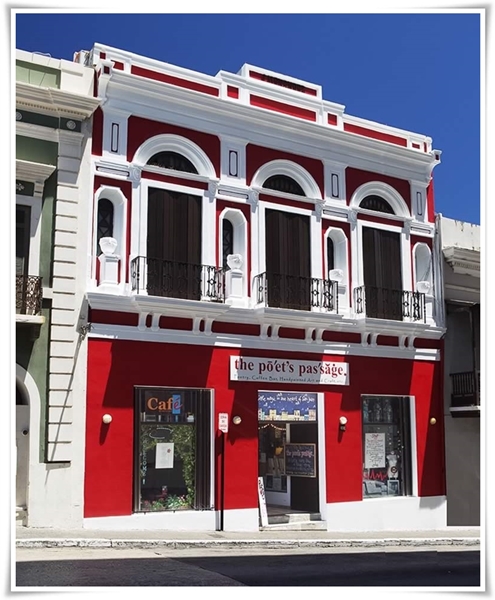 When you’ve had your fill of chocolate, head over to The Poets’ Passage (203 Calle Cruz, Old San Juan) for a night of poetry and music. The Poet’s Passage is a vibrant center for poetry, performance, music, and art. Lady Lee Andrews, a poet, and her husband, Nico, a painter, host weekly poetry and music events to showcase local and international talent.
When you’ve had your fill of chocolate, head over to The Poets’ Passage (203 Calle Cruz, Old San Juan) for a night of poetry and music. The Poet’s Passage is a vibrant center for poetry, performance, music, and art. Lady Lee Andrews, a poet, and her husband, Nico, a painter, host weekly poetry and music events to showcase local and international talent.
A must have experience at the Poet’s Passage is sitting in the café with a frothy cappuccino and a slice of brazo gitano — a local favorite.
So, are you ready to pack your journal, camera, and book? All these great literary sites will draw you deeper into the heart of the island. As Lin-Manuel Miranda famously said, “there is nothing better for your soul than a trip to Puerto Rico.”
Other Notable Books by Puerto Rican Authors:
Simone by Eduardo Lalo
Some categorize Simone as a love story, others as a thriller. Eduardo Lalo’s acclaimed Simone will take you deep into the neighborhoods of San Juan. Centered around Old San Juan, Río Piedras, and Santurce, the story follows an anonymous narrator — a middle-aged writer that spends his day scribbling about his life — who suddenly starts receiving messages from an unknown source. Regardless of where he goes, a message awaits him. As the novel unfolds, so does the narrator’s love for the secret pursuer and the reader’s affection for the city. Lalo received the prestigious Rómulo Gallegos Award, giving him international recognition. Read “Why Simone is the one Puerto Rican novel you absolutely must read.
La Borinqueña by Edgardo Miranda
La Borinqueña is a graphic novel that introduces a Puerto Rican superhero inspired by the island’s National Anthem. The novel was created by Edgardo Miranda, a writer with Marvel Entertainment. La Borinqueña’s powers, granted by a Taíno goddess when she goes exploring the caves of the island, are derived from the island’s myths and history. This female heroine has superhuman strength, the ability to fly, and can control storms. La Borinqueña is a new and original comic book character that has grown into a cultural phenomenon and a nationally recognized symbol of Puerto Rican patriotism, social justice, and equality for all. Read more about the creating of this super heroine here.
More Recommended Books
- Songs of Simple Truth by Julia de Burgos
- The Last Salsa Singer by Ivelisse Rodríguez
- La Llamarada (The Flare) by Enrique Laguerre
- El Hombre en la Calle (The Man in the Street) by José Luis González
- Mundo Cruel (Cruel World) by Luis Negrón
- Juliet Takes a Breath by Gabby Rivera
- La Casa de la Laguna (The House on the Lagoon) by Rosario Ferré
- La Guaracha del Macho Camacho (Macho Camacho’s Beat) by Luis Rafael Sánchez
- Felices Días Tío Sergio (Happy Days, Uncle Sergio) by Magali García Ramis
- La Pasión Según Antigona Pérez (The Passion According to Antigona Pérez) by Luis Rafael Sánchez
- My Beloved World by Sonia Sotomayor
- Nuestra Señora de la Noche (Our Lady of the Night) by Mayra Santos Febres
